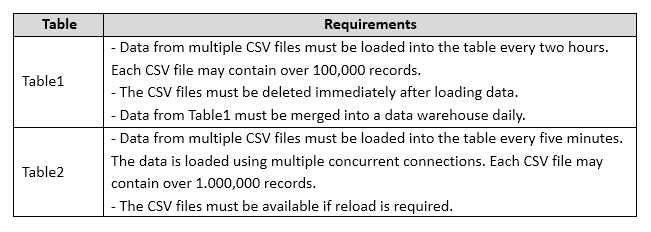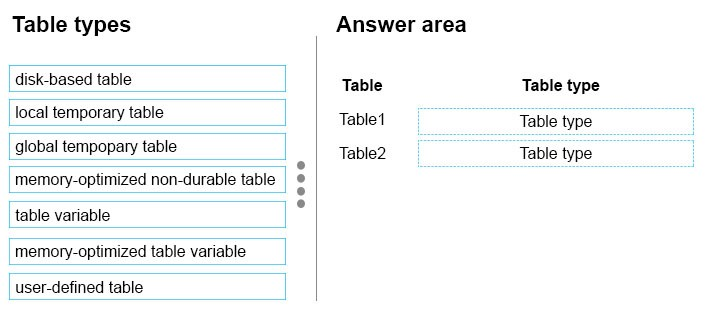

DRAG DROP -
You must create two staging database tables. The tables have the following requirements:
You need to select the correct storage mechanism for each table.
Which storage mechanism should you use? To answer, drag the appropriate table types to the correct tables. Each table type may be used once, more than once, or not at all. You may need to drag the split bar between panes or scroll to view content.
Select and Place:

Froze
Highly Voted 5 years, 2 months agoMML
4 years, 11 months agostm22
4 years, 11 months agoHeisenberg008
Highly Voted 5 years, 4 months agorya
5 years, 4 months agoJohnFan
5 years, 3 months agoAnette
4 years, 12 months agoAnette
4 years, 12 months agoTheDUdeu
Most Recent 4 years, 5 months agoJay2
5 years agoCococo
4 years, 9 months agoJohnFan
5 years, 3 months agoJohnFan
5 years, 3 months agoJohnFan
5 years, 3 months agoFroze
5 years, 2 months agoNickname17
5 years, 2 months agorcbrown
5 years, 3 months agoJohnFan
5 years, 3 months ago